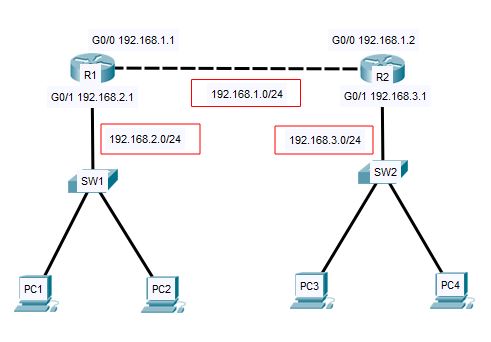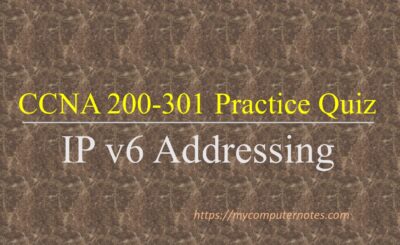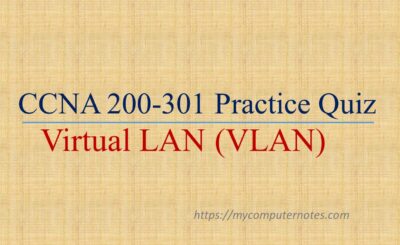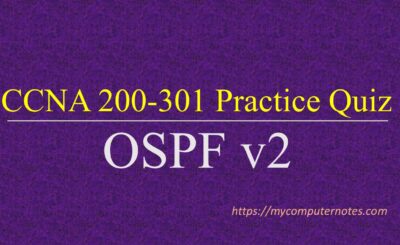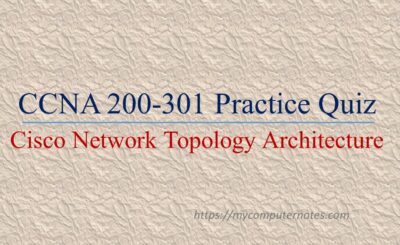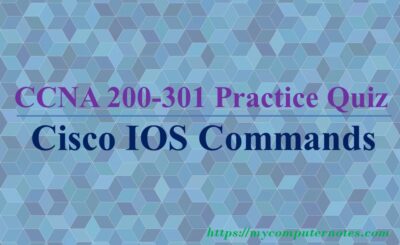
This quiz section contains a CCNA practice quiz on IP routing. You can test your skills on the concept of IP routing in computer networking. The following quiz section contains multiple-choice questions, drag and drops as well as “refer to the exhibit” questions as per the CCNA 200-301 Exam pattern.
The CCNA practice quiz is very helpful for the preparation for CCNA 200-301 certification exam.
Each question is provided with the correct answer and an explanation for the correct answer. Click on the button named “Answer” just below the question to view the answer and the explanation. You can hide the answer and the explanation by re-clicking the “Answer” button.
CCNA Practice Quiz – IP Routing
|
1. When a packet is passed through the network, its ___________ is changed at every hop, while _______ remains the same.
Answer: Option B Explanation: The correct option is B.
The destination mac address is changed at every hop, whereas the destination IP address remains the same until it reaches the final destination.
|
|
2. It is a process or mechanism to send IP packets from source to destination across the different networks using the best possible path.
Answer: Option B Explanation: The correct option is B.
Routing is the process of forwarding packets from source to destination through the best possible shortest path and efficiently.
|
|
3. Which of the following statements are true about the static routing? Choose any two.
Answer: Options A and B. Explanation: The correct options are A and B.
Static routing is more secure and configured manually. It consumes very few system resources and suitable for only small networks.
|
|
4. Which of the following command line syntax correctly configures the default route on a Cisco router with the next-hop destination address being 192.168.10.2/24
Answer: Option B Explanation: The correct answer is B.
|
|
5. Which of the following types of addresses are automatically added to the routing table, when you assign an IP address to a router interface and run the “no shut down” command?
Answer: Option B Explanation: The correct option is B.
The directly connected networks are automatically added to the routing table. Local refers to the IP address assigned to the directly connected interface.
|
| 6. Refer to the following exhibit.
What will be the next-hop IP address of Router 1?
Answer: Option C Explanation: The correct option is C.
The next-hop of Router 1 is Router 2. The interface of Router 2 that is connected to the router is the next-hop interface of Router 1.
|
7. Which of the following routing processes use routing protocols to build routing tables?
Answer: Option B Explanation: The correct option is B.
Dynamic routing uses routing protocols to decide the best path for packet transmission from source to destination.
|
|
8. What is the value of the administrative distance of a directly connected interface?
Answer: Option A Explanation: The correct answer is option A
|
9. What is the value of the administrative distance of static routing?
Answer: Option B Explanation: The correct answer is option B.
|
|
10.The router has learned network number 172.25.10.0/24 from its neighbour via multiple routing protocols. Which of the following route is updated to the routing table?
Answer: Option B Explanation: The correct answer is option B.
When multiple routing protocols are configured in a router, the router selects the best path having the lowest administrative distance (AD).
|
|
11. A network administrator enters a command – IP route 172.25.10. 0 255.255.255.0 192.168.10.2 Which of the following options will justify the above command issued?
Answer: Option B Explanation: The correct answer is option B.
The command to establish static routing is –
Router(config)#ip route <destination network> <subnetmask> <next hop interface IP address>
|
|
12. The metric used by distance vector routing protocols to select the best possible path between source to destinition is ________.
Answer: Option C Explanation: The correct option is C.
Hop count is the metric used by the dynamic routing protocol to select the best path.
|
13. How do the link-state protocols determine the best possible path from source to destination?
Answer: Option D Explanation: All of the above options are correct regarding link-state protocols. |
|
14. Which of the following statements are true regarding classless routing? Choose two.
Answer: Options B and D. Explanation: The correct options are B and D.
VLSM is used to represent subnet mask in classless routing. OSPF supports classless routing.
|
|
15. Refer to the exhibit.
Answer: Option C Explanation: The correct option is C.
|
|
16. What will be the subnet mask length for the single host route?
Answer: Option D Explanation: The correct option is D.
|
17. ____________ are the types of routes whose default administrative distance can be changed manually with a higher administrative distance value.
Answer: Option A Explanation: The correct answer is A.
|
|
19. Refer to the exhibit.
Answer: Option C Explanation: The correct option is C.
|
| ← Prev | Next → |
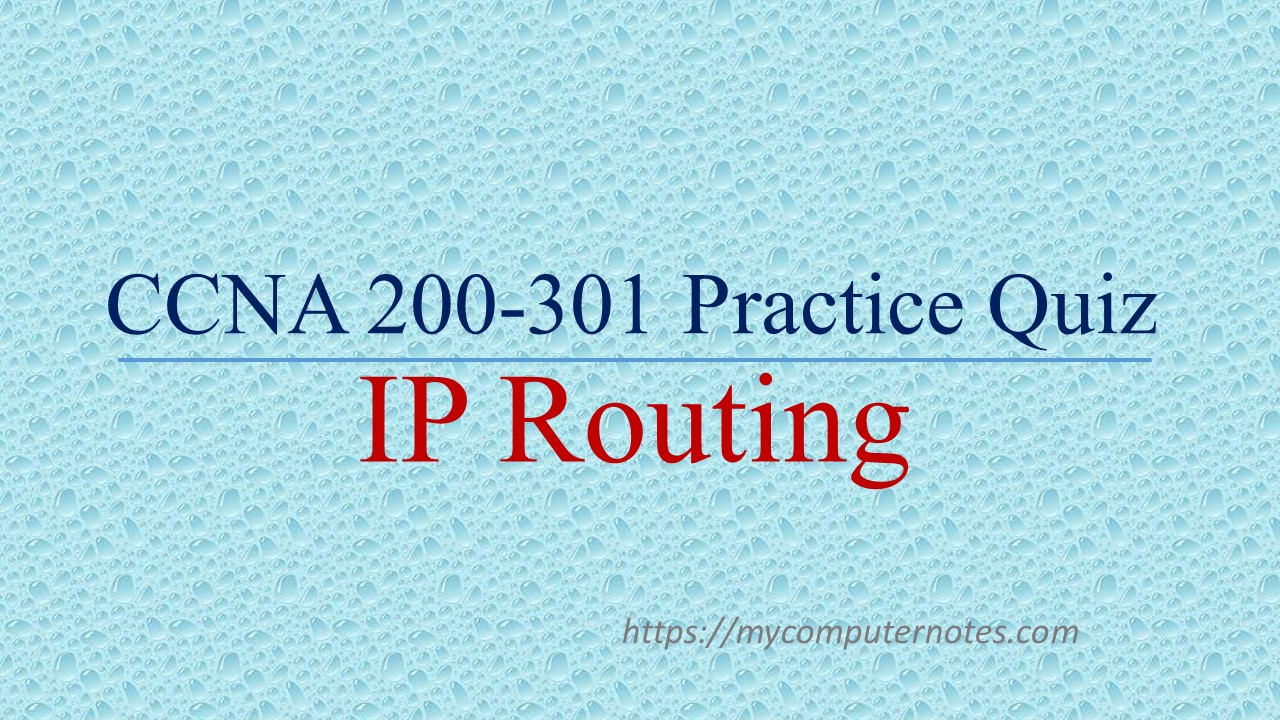

 Which command is used to disable the “IP domain lookup” issue?
Which command is used to disable the “IP domain lookup” issue?

